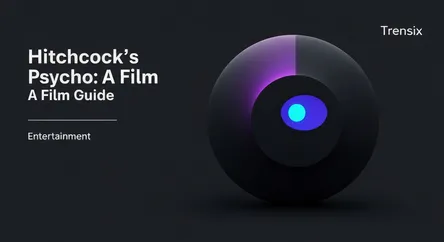Entertainment
Hitchcock's Psycho: A Film Guide

Explore Alfred Hitchcock's 1960 masterpiece, Psycho. Learn why this iconic horror film changed cinema and continues to terrify audiences today.
What is it?
Psycho is the seminal 1960 psychological horror-thriller directed by Alfred Hitchcock. Based on Robert Bloch's novel, it follows Marion Crane, a secretary on the run with stolen money who checks into the remote Bates Motel. There, she encounters the quiet and disturbed proprietor, Norman Bates, who lives under the shadow of his demanding mother. Shot in black-and-white and featuring an iconic score by Bernard Herrmann, the film is a masterclass in suspense, misdirection, and atmospheric dread, famous for its shocking narrative twists.
Why is it trending?
As a foundational film of the horror genre, Psycho is perpetually relevant. It's a constant subject of academic study, critical analysis, and filmmaker inspiration. Its anniversaries, restorations, and frequent references in modern pop culture keep it in the public eye. The film's revolutionary editing, particularly in the infamous shower scene, and its complex psychological themes are still dissected today. Norman Bates remains one of cinema's most iconic villains, ensuring the film's enduring legacy and continued discussion among cinephiles and new audiences alike.
How does it affect people?
Psycho fundamentally altered the cinematic landscape and audience expectations. By killing its main character unexpectedly, it shattered narrative conventions and instilled a deep sense of unpredictability and fear. The film tapped into Freudian psychology and the concept of the "monster next door," making its horror feel disturbingly real and close to home. It left a lasting cultural impact, influencing countless thrillers that followed. For many viewers, it created a visceral, psychological terror that lingered long after the credits rolled, forever changing the potential of cinematic fear.